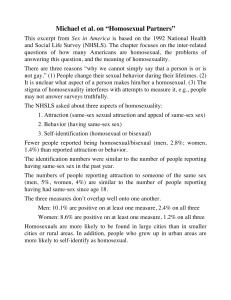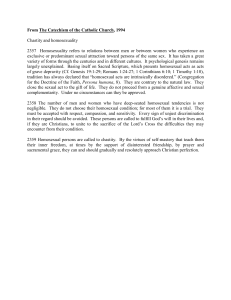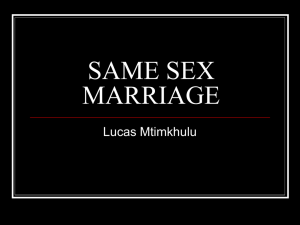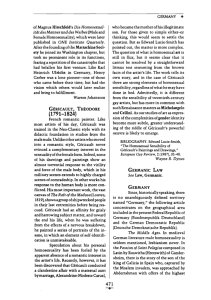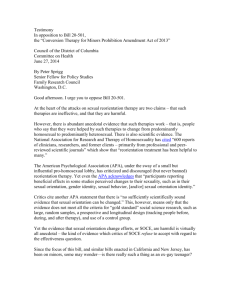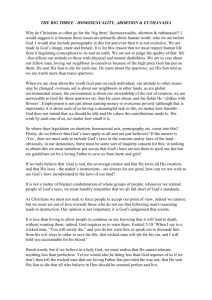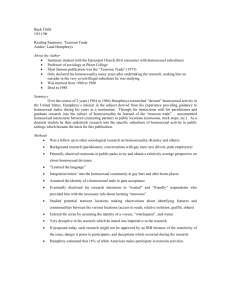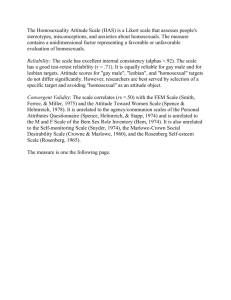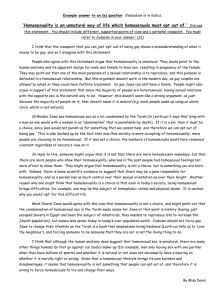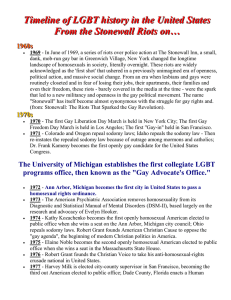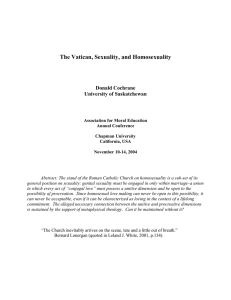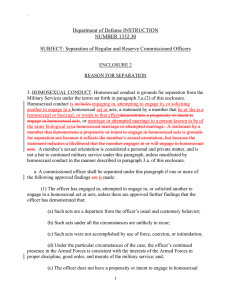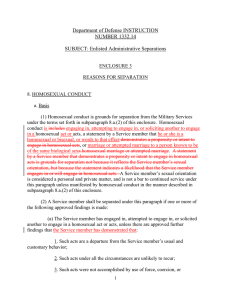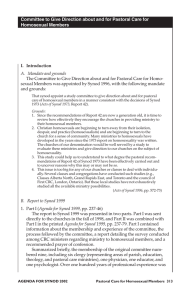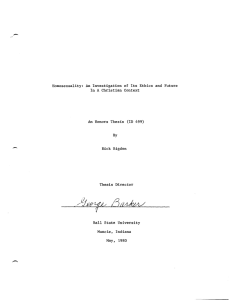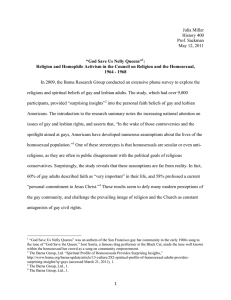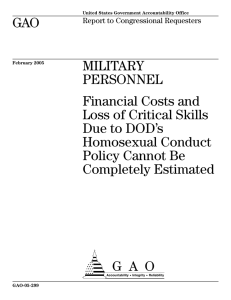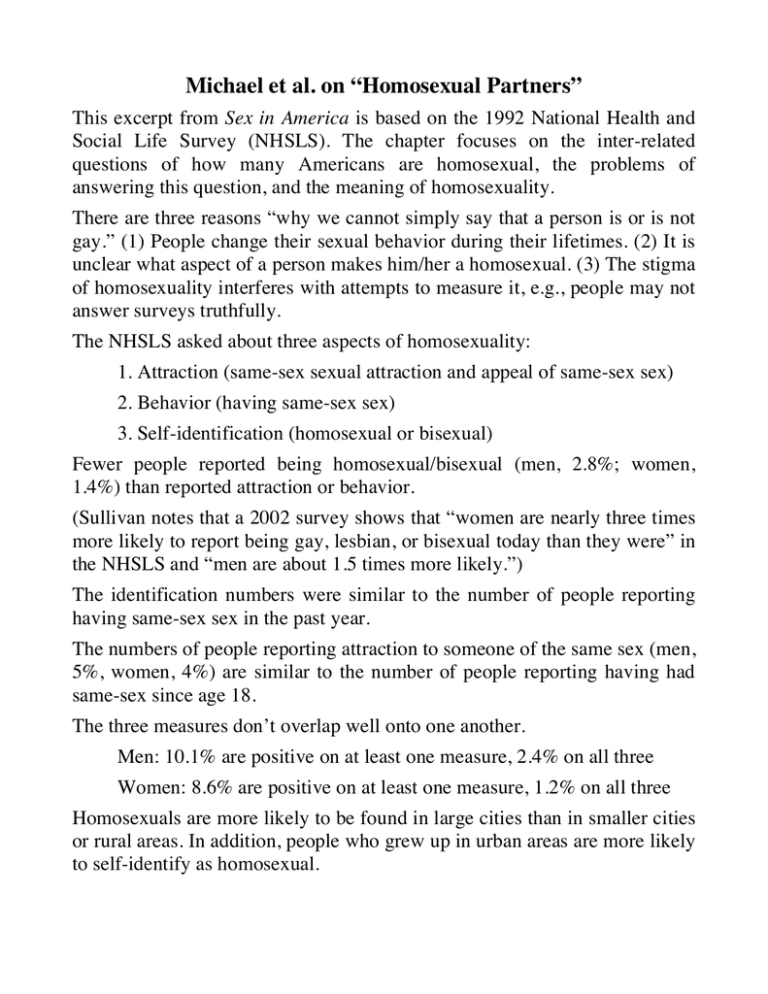
Michael et al. on “Homosexual Partners”
This excerpt from Sex in America is based on the 1992 National Health and
Social Life Survey (NHSLS). The chapter focuses on the inter-related
questions of how many Americans are homosexual, the problems of
answering this question, and the meaning of homosexuality.
There are three reasons “why we cannot simply say that a person is or is not
gay.” (1) People change their sexual behavior during their lifetimes. (2) It is
unclear what aspect of a person makes him/her a homosexual. (3) The stigma
of homosexuality interferes with attempts to measure it, e.g., people may not
answer surveys truthfully.
The NHSLS asked about three aspects of homosexuality:
1. Attraction (same-sex sexual attraction and appeal of same-sex sex)
2. Behavior (having same-sex sex)
3. Self-identification (homosexual or bisexual)
Fewer people reported being homosexual/bisexual (men, 2.8%; women,
1.4%) than reported attraction or behavior.
(Sullivan notes that a 2002 survey shows that “women are nearly three times
more likely to report being gay, lesbian, or bisexual today than they were” in
the NHSLS and “men are about 1.5 times more likely.”)
The identification numbers were similar to the number of people reporting
having same-sex sex in the past year.
The numbers of people reporting attraction to someone of the same sex (men,
5%, women, 4%) are similar to the number of people reporting having had
same-sex since age 18.
The three measures don’t overlap well onto one another.
Men: 10.1% are positive on at least one measure, 2.4% on all three
Women: 8.6% are positive on at least one measure, 1.2% on all three
Homosexuals are more likely to be found in large cities than in smaller cities
or rural areas. In addition, people who grew up in urban areas are more likely
to self-identify as homosexual.

